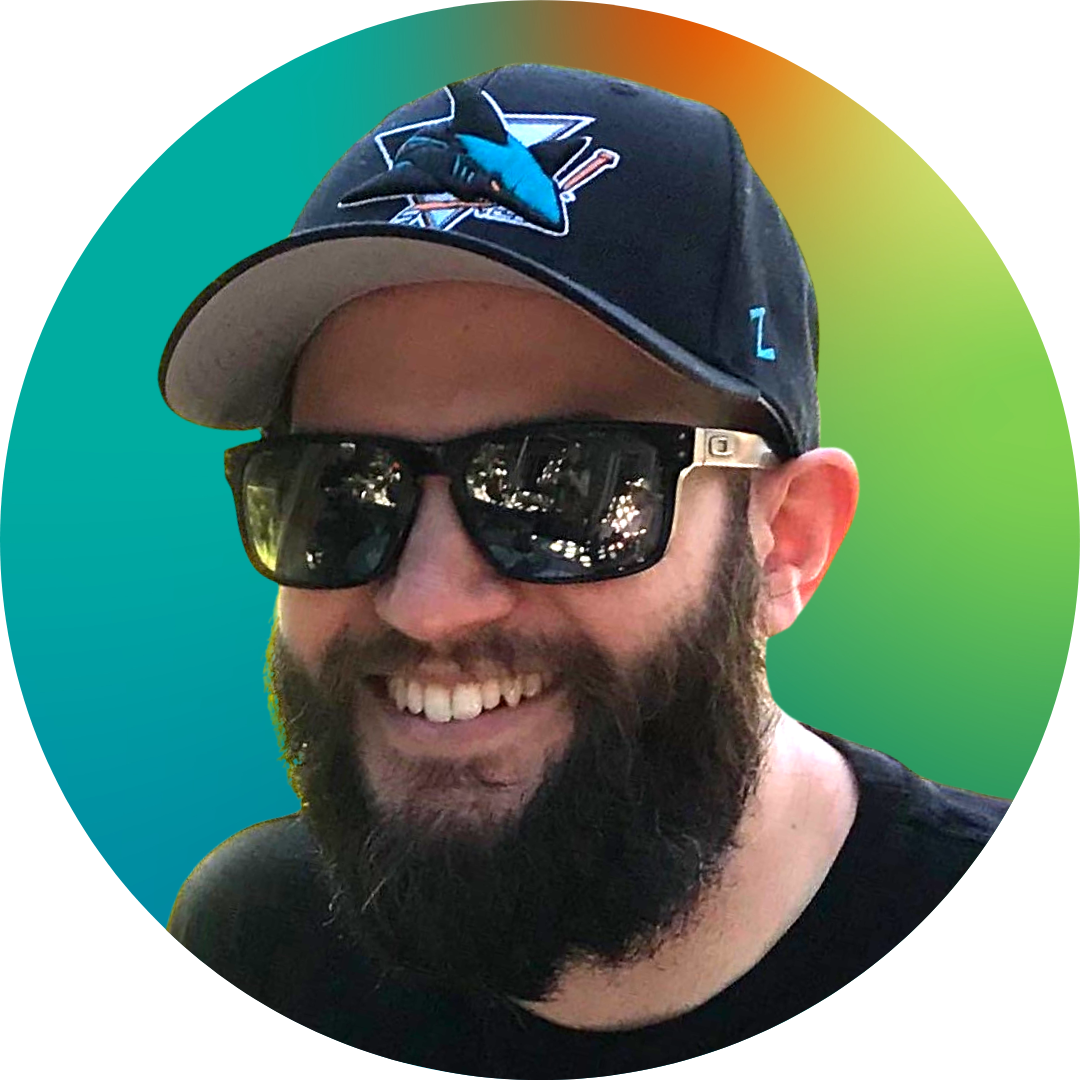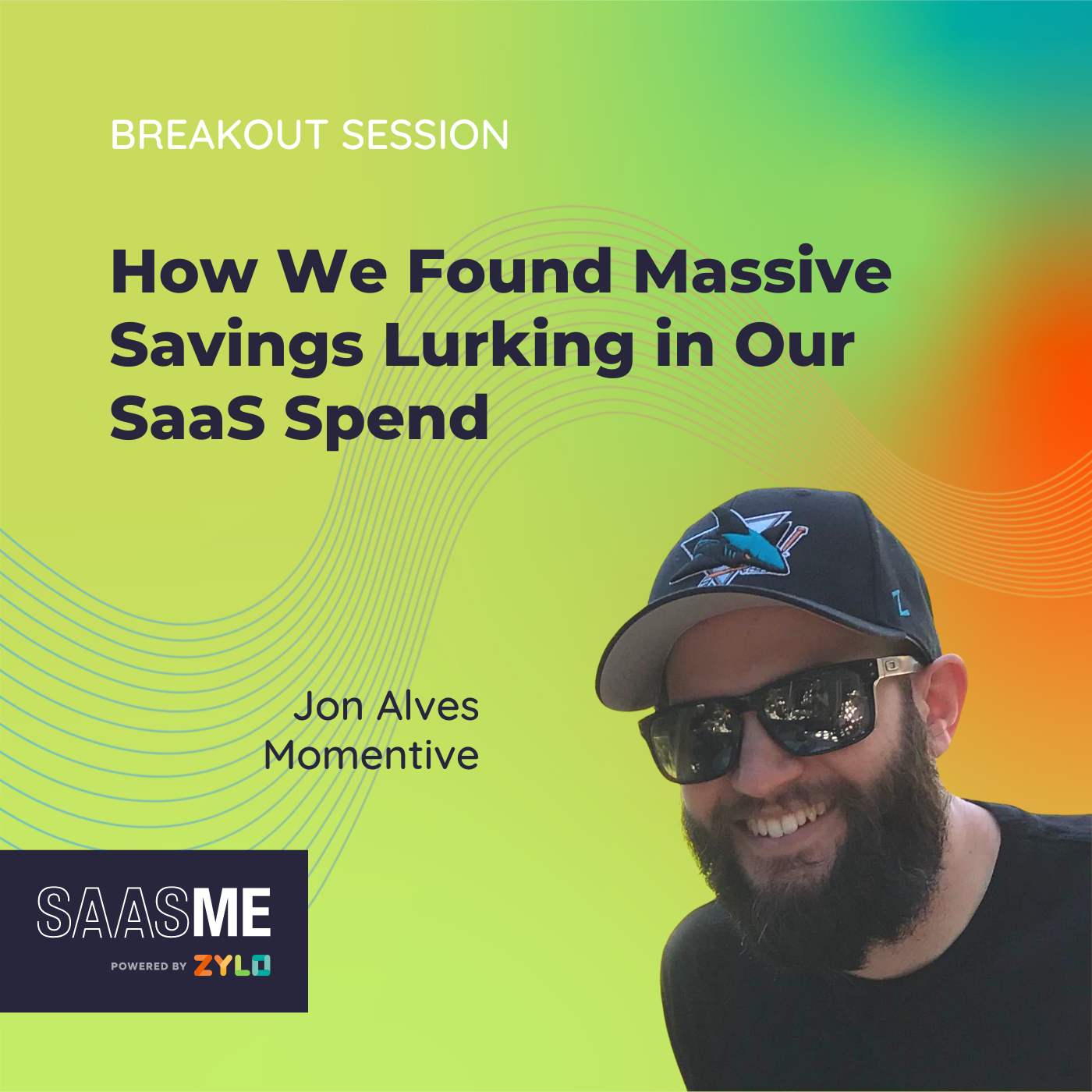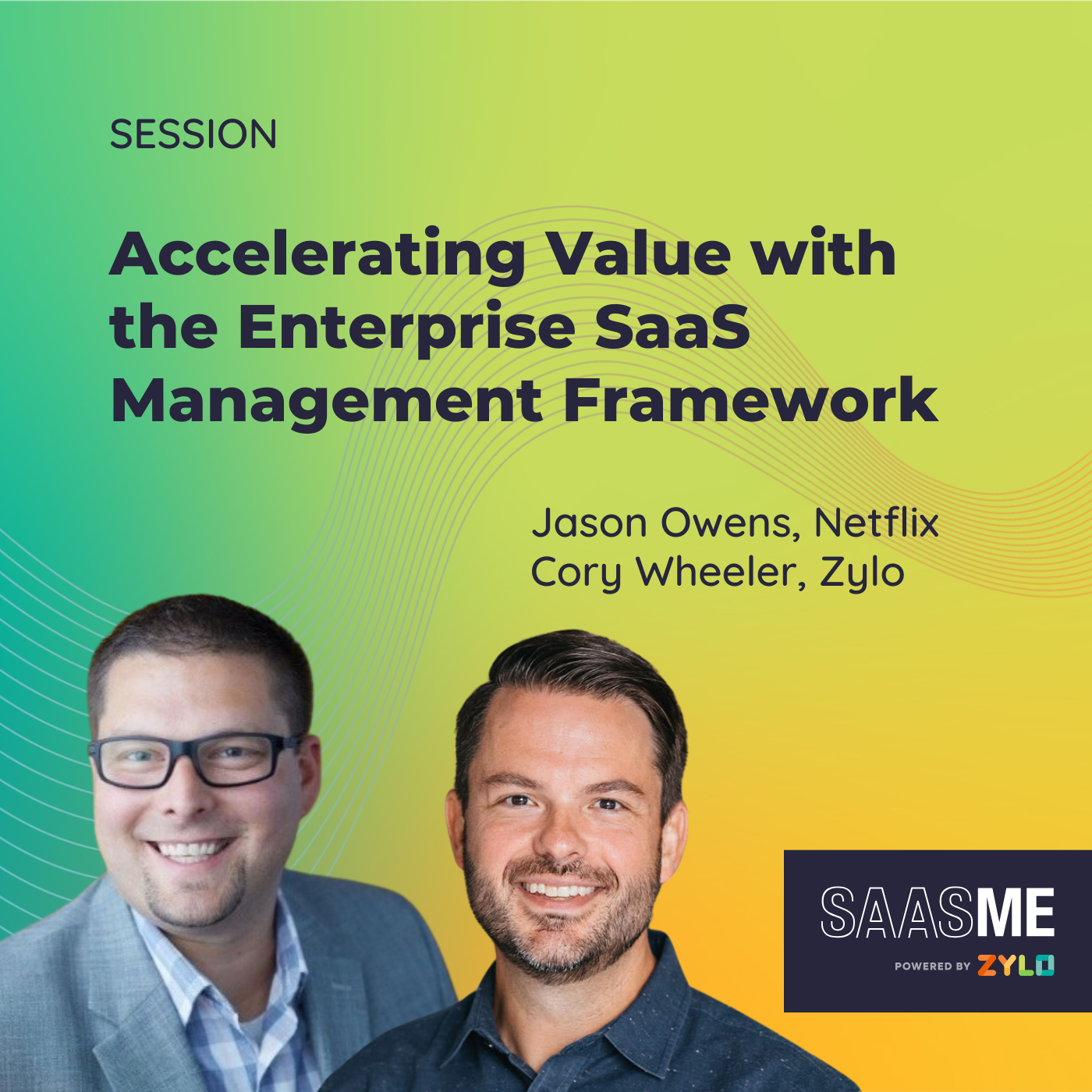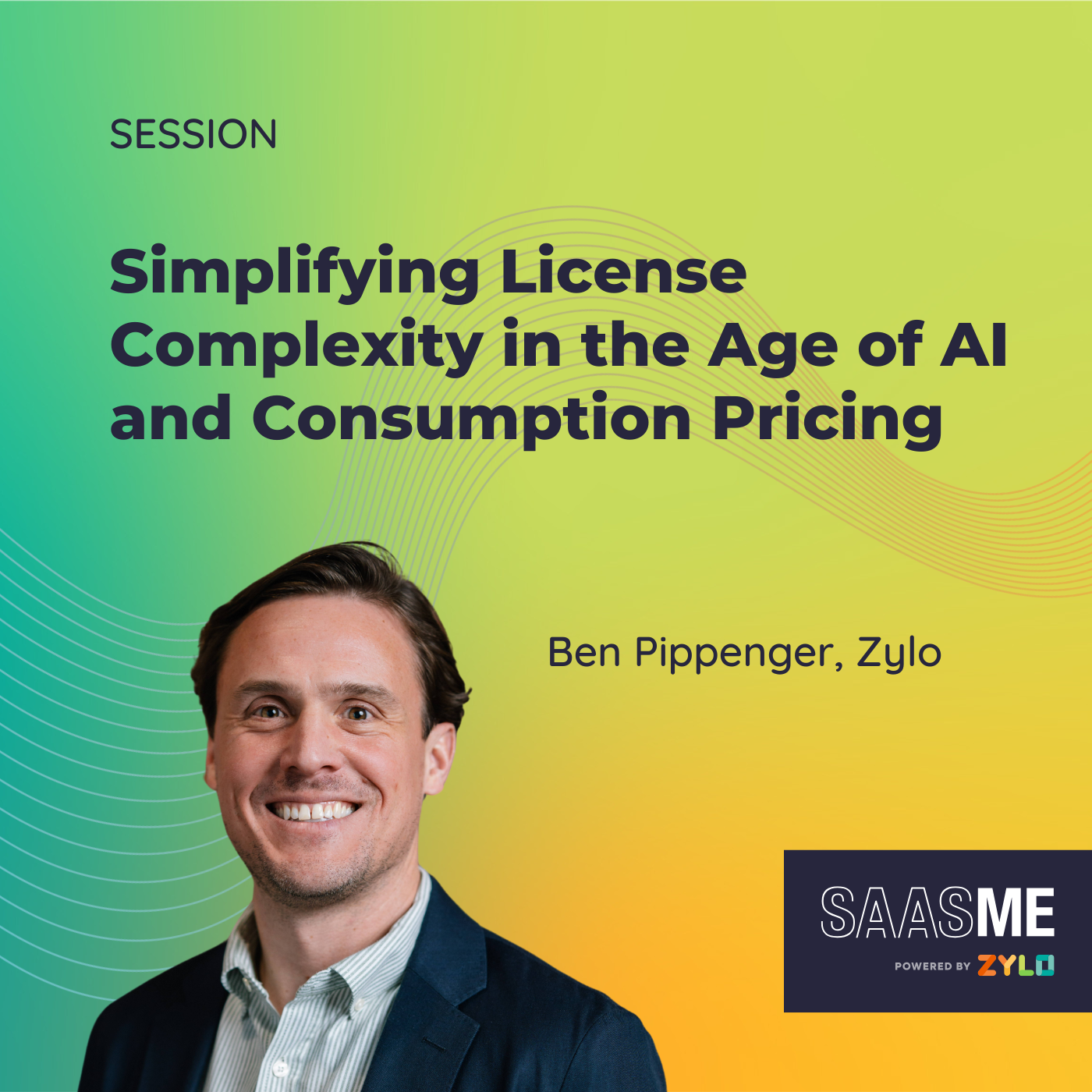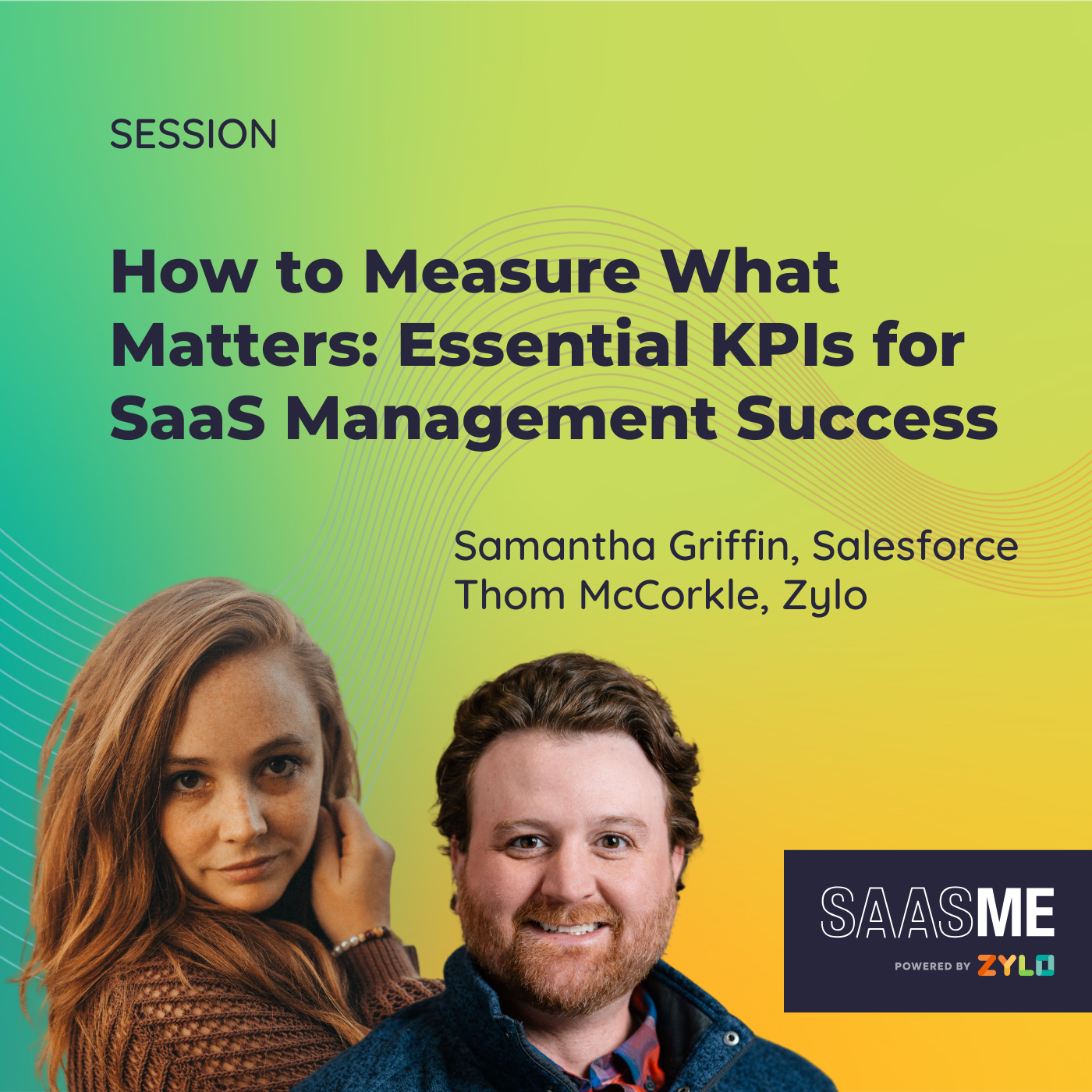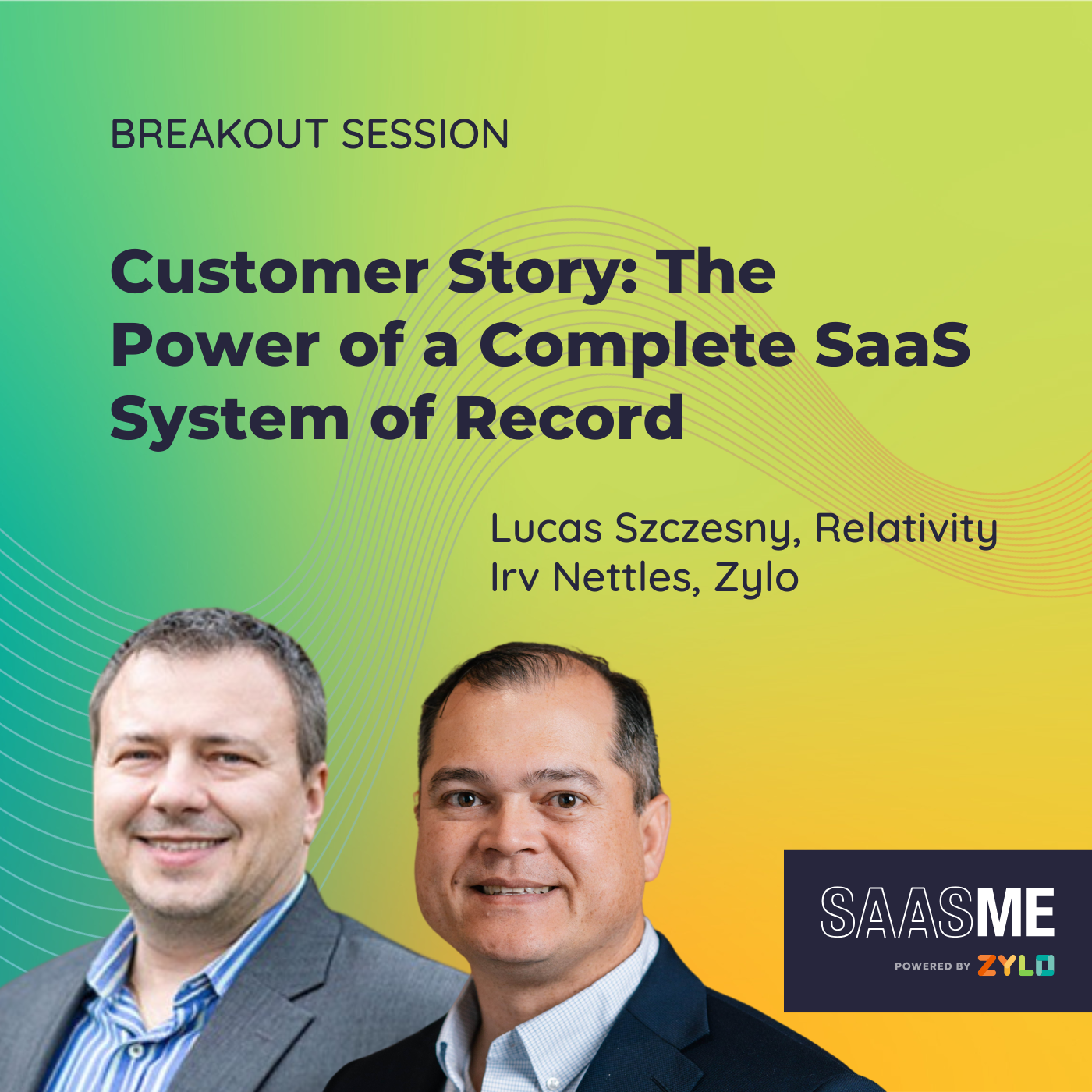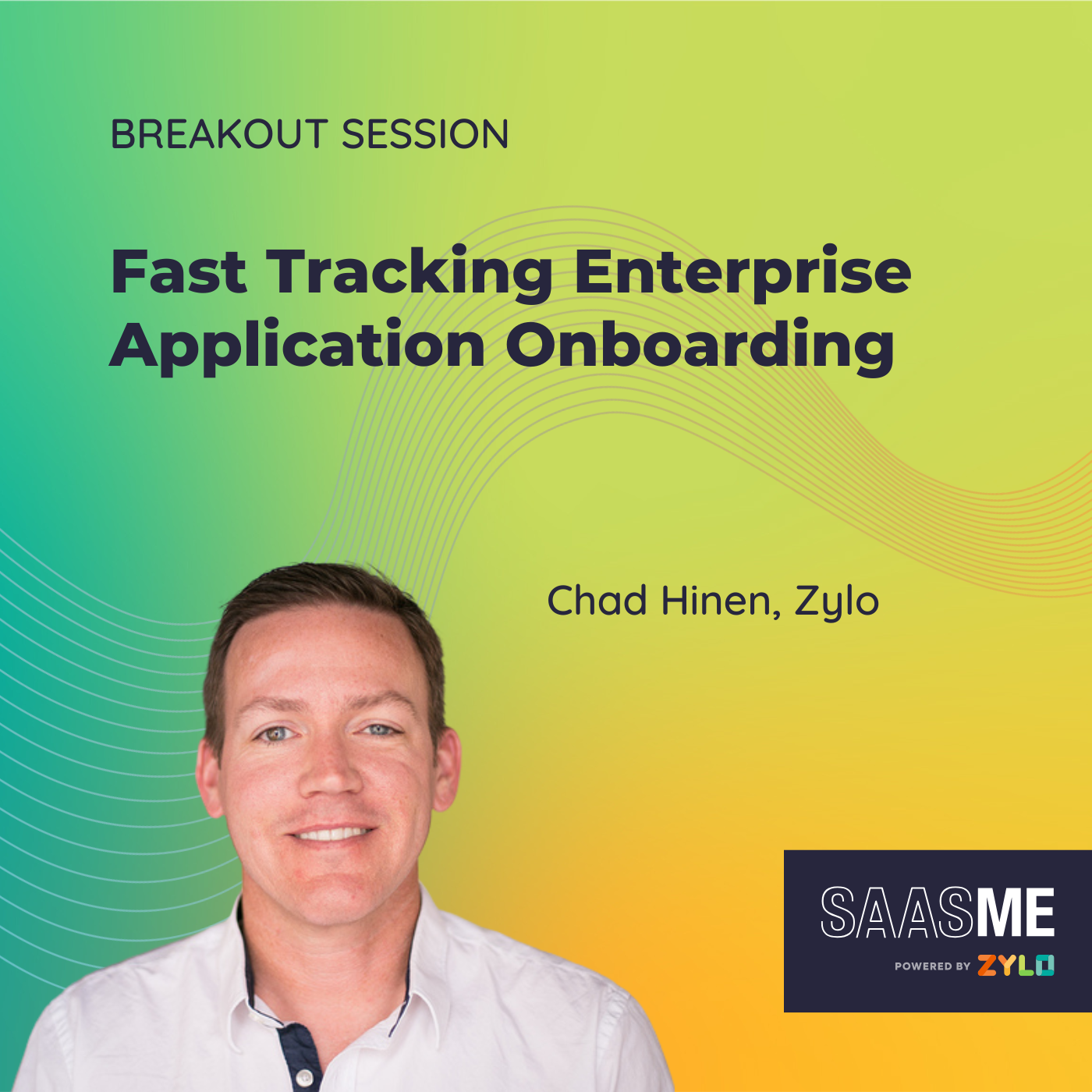How We Found Massive Savings Lurking in Our SaaS Spend
- 0.5
- 1
- 1.25
- 1.5
- 1.75
- 2
Jon Alves: Welcome SaaSMe attendees. Like Amanda said, this session's about how we found massive savings lurking in our SaaS spend. I'm John Alves, I'm from Momentive, I'm a senior category manager, I've been with Momentive since 2019 and I've been a category manager for technology for the past seven years. My team and I are the procurement business partners for all stakeholders that purchase and manage SaaS at Momentive, and Momentive is an agile experience management company.
Jon Alves: We offer enterprise solutions for employee, customer and product experience and brand and market insights by our three product brands Momentive, GetFeedback, and SurveyMonkey, and Survey Monkey is where our journey begins. In 2019, Survey Monkey turned 20 and this is really the start of our SaaS management journey. It began with defining the problems and challenges that a SaaS Management program could address and scoping out the requirements and building a business case for a SaaS management solution, and it came at a time where we were also acquiring two additional companies, Usabilla and Get Feedback, and these were two startups without centralized procurement organizations. So this added to the complexity of our already sprawling tech stack.
Jon Alves: So the need for a solution like Zylo is starting to grow, and so again to layer on top of that, we had a cloud transformation that we were going through, which is a major infrastructure change. So it was affecting our production services and our engineering teams, but also our business systems, IT security and data teams, and they were going through their own tech refresher on the same time. So we were really looking for a solution that could address all of these different challenges that were mounting.
Jon Alves: So in 2020 we launched Zylo, and it came at a good time because I think we were all going through a reimagined work at this time where we were transitioning from a standard in office to a remote to a hybrid environment, and this was really, I think we all know this thrust us into that SaaS dominated work environment and really started to create some unique challenges and opportunities that solutions like Zylo helped us solve.
Jon Alves: With all of this, we were seeing a growing need for additional help, and at this time, this was around 2021, we onboarded Zylo's managed services to support our SaaS renewals, and I'll talk quite a bit about this program. This has been really key for us uncovering some savings that we felt we were missing out on, and then that brings us to today where we're dealing with some macro economic uncertainty and in some way or another, I think this is affecting all of us. May not have hit you just yet, you may already be thinking about it, but this is really about maximizing our investments and all of these things helped us define what our SaaS management program would look like.
Jon Alves: But it really was a few key challenges over this three year period that we used to build that SaaS management program, and of course that starts with our sprawling tech stack that was built on 20 years of legacy software and SaaS, our MNA activity and trying to manage all of this through P2P data where we have very limited visibility by supplier and spend and also trying to bring in these companies that same thing, they're handing us spreadsheets of what they're buying, their expensed applications, their invoices. So we need to make sense and bring these things together.
Jon Alves: Next one is like saving money with the lights on, and what the challenge for us here was we were managing a lot of software renewals as we're trying to onboard new technology, and for us this was about making compromises to prioritize certain activities. You had to make some hard decisions to support a renewal versus a new solution. We weren't able to dedicate the time that was necessary to both activities because these were starting to grow so fast. It just added to one of the pressures that we had had, and being from the finance org, savings is a KPI for us. So we really needed to figure out a way to address this challenge so we feel we were getting all the savings that we could from these opportunities and engagements.
Jon Alves: And the last one is actually really about managing uncertainty and managing events outside of your control. I've listed them as reimagined work and macroeconomic uncertainty, but the truth is that these are challenges that come up that we may not foresee or know how we're going to navigate or really have a playbook for, but if you build a strong SaaS management program, you can still recognize savings during these times and you can still be effective and efficient at managing your technology solutions, and our challenges aren't unique. I think in some way you're all dealing with your own version of this or you probably wouldn't have joined this conference today, but our need and reliance on technology has grown over time. So it's time to dedicate resources to building programs to make sure you've got it under control.
Jon Alves: So here are just a few of the steps that we've taken to do just that. It started with obviously our launch of the Zylo core solution. We were compiling a list of our applications, not just suppliers and enriching that data, and this really allowed us to understand really who our key suppliers are and lean into those, and a couple other quick examples there would be you understand that Salesforce is also the owner of Tableau or Slack or some of these other solutions. You can see that full picture. You're not seeing those as individual lines on a P2P report.
Jon Alves: The same thing applies to your VARs or your Amazon marketplace where it's challenging to see the full list of applications that you've got. You're really just seeing a supplier line and a dollar amount associated with that, and there's a lot more work that goes into pulling out that data. So really once you have this data, what do you do with it? And we leverage the data to establish policy, process, and category management strategy.
Jon Alves: To give you an example of each one for policy, we implemented an IT approval for all expense applications to prevent that text sprawl. For process at the beginning of a new request for new technology when the business case comes in, we would evaluate the requirements, the business problem they're trying to solve, what the proposed solution was and leverage the enriched data from Zylo based on functions or subcategory to potentially find this solution that already exists and give them those as options rather than onboarding a new solution and contributing to the proliferation of your text stack.
Jon Alves: And the last one is really to eliminate ways to achieve savings. This is about catching your tail. I think we all know that there's a tail that is there. We may actually know what it looks like, but it's really hard to address. When you get the enriched and compiled data, you can start to build a plan to address that, and while this isn't just related to our tail, some of the things that we were able to do as part of building our foundation was to reduce our total number of applications from 430 at the end of 2020 to 396 today, and that 34 may seem a little bit odd, but we did onboard a lot of new technology. There were some one for one swaps, there were other cases where we added a couple of different solutions and maybe only took out one, but what this really came out to after three years was 222 canceled applications, which in aggregate is around$ 7 million in spend that we removed from our tech stack, and this is just the foundation that we built.
Jon Alves: Once we had this [foundational data] in place, it was time for us to consolidate, optimize, and rationalize. I like to think of this as keeping the house clean and this is using the Zylo tools and features that they have for consolidation, ravaging the dashboards or the insight to generate ideas for consolidations or use your own filters for a use case that makes sense for you to find those opportunities, and I still use this top 10 redundant functions today. We're always adding new solutions so this gets updated and I can go back and make sure that," Hey, did I miss something? Did we add something here that we could potentially remove something someplace else and capitalize on some savings there?"
Jon Alves: The next one really is around optimization. If there's any IT folks on here, I think this is obviously something that's really important to you, but for us, for a category manager, what this meant was effectively knowing when we should or shouldn't add additional licenses, and what we were able to find is the adoption plans that end users had for their technology didn't always work out. There were users that used the solution more sporadically, they were some frequent users and some never used it at all, and being able to use the optimization or the usage data to optimize these solutions, we're able to suggest not just not buying additional licenses but also making program changes where you could move from what is traditional, an opt out where everybody in a group or the organization gets a license to moving to an opt in where you need to make a request for a solution or there are certain requirements that need to be met before you can have access, and each one of these are cost avoidance strategies to ultimately eliminate the need for adding additional licenses to your account.
Jon Alves: And the last is to rationalize, and this is really something I talked about with policy and process. What we're doing here is trying to find alternatives for new solutions that get requested and leveraging this data to add just in a friction to the process so that the requesters, the stakeholders need to build robust justifications to present to finances to why this solution should be added to our tech stack. It also helps create that conversation around if you're going to add a new solution, what do you do about the existing solution? And then also even having that conversation around what does success criteria look like on this? And that can be related to usage data. We expect everybody to use this, this to be 100% adoption or 80% whatever's realistic, and then you can go back and take a look at this over time.
Jon Alves: So again, these three different pillars are around maintenance and the ongoing program that is SaaS management and it takes time and resources to effectively manage this.
Jon Alves: So that brings me to the last section, which is our Zylo managed services, the SaaS negotiator. So for those of you who aren't familiar with this program, this is a Zylo dedicated resource that gets assigned to your team. For us, this means that they're going to be managing all of our SaaS renewals from start to finish. They act as a extension of your team. So they're talking with the internal stakeholders to define scope, understanding demand plans or reductions or right sizing for that particular renewal, and then they're taking those requirements to the supplier and negotiating the deals directly with them, and they have the advantage of their Zylo data in order to support and benchmark whatever deals that the supplier is presenting them with.
Jon Alves: And the last piece of it is they clearly document and share their savings and updates. So I'm able to let this team or SaaS negotiator work autonomously and they come to me with a weekly meeting where we go through all the opportunities. We talk about how we can best achieve savings there or what are some plans that we're seeing on the new side where we're buying technology and it's really a partnership between this renewals team, the new sourcing team in order to be as effective as we can, and to give some stats to really what the stats negotiators are managing for us and have been able to achieve. They are managing 39% of our spend. They've been able to achieve an 8% total contract savings and decrease the annual SaaS spend by 3%. What that 8% averages out to over the last 12 months is about a million dollars in savings for us. So overall this program has been able to uncover and realize some of those savings that we felt we were leaving on the table when we didn't have the resources available or we had to prioritize certain things differently.
Jon Alves: There's also one other hidden savings that we were able to get out of this program and this was to reallocate 15 to 20 hours per week back to our category manage for more strategic work. So our category managers are now able to focus on that strategic sourcing and drive more competitive RFX processes so that we can achieve better savings on that side as well as have conversations with executives to present our consolidation opportunities.
Jon Alves: The optimization opportunities that we have on an ongoing basis identified as well as there are some opportunities for professional growth. My category managers are able to learn how to do different things like present. They're able to spend a little bit more time on understanding where the market is going and what the market is doing. They're not just focusing on volume and transactions. They're really able to think a little bit differently, and that's really part of the benefit and the success that we've gotten with the SaaS negotiator program.
Jon Alves: Let's start to land this plane. I'm going to launch into some key takeaways and these key takeaways are things that I've talked about already, but I'll go into a little bit more specific ideas that you could take from this presentation and apply to your tech stack.
Jon Alves: For one of those is to leverage Zylo's saved filters. For me, this is really going in and using the ones that are out of box. They have a ton that are there already for different ideas on ways to visualize the subscriptions that you have, but for me this is also about building filters that are set up by quarter or by year and by business unit executive or by requester.
Jon Alves: One of the things that I save a lot of time on now is when I get asked about maybe certain subscriptions for certain executives or by finance partner, I can just click into the view that I have and give the data. It's also helped a lot for having strong monthly cadent meetings. I meet with our CIO and our CTO and I'm able to run these to check through these saved filters to ensure that we're properly planning for the next quarter, two quarters or even a year in advance.
Jon Alves: Next one is to use the auto box recommendations to guide you. I don't think there's anything wrong with jumping into the insights tab that they have and clicking through all of the different visualizations that they've created there. Whether it's for license management or for your expensed applications where you're seeing multiple users expensing the same solution or maybe one user who's expensing multiple solutions. I think it's really given us a place to start and it's really a way to guide conversations that otherwise don't have much support behind them. We're able to even provide screenshots of these opportunities, and of course once you get into them, you can dig a little bit deeper and go beyond what's at that surface level that you're able to see.
Jon Alves: The next one is to connect applications with direct integrations. I think if you're a Zylo user, you're already doing this. If you're thinking about something like Zylo, this is really where some of the best cost avoidant savings comes in. These direct integrations are typically your largest and highest dollar contracts. So you're really able to make sure that they're utilizing the licenses appropriately, preventing adding licenses midterm when it's unnecessary or the justification for buying licenses can get validated through the data that you're seeing as part of the direct connection. You can see that the licenses that you are giving out to your users or being utilized the way that you intended them to be used.
Jon Alves: And the next one is to incorporate insights into your data for process and policy. I think for me, we've been able to be successful to achieve cost avoidance and cost savings really by building our SaaS management program with the data that we have from Zylo. This is something that's always changing as the environment changes, whether it's from outside or internal, but once we put those policies and processes in place, we can really guide our stakeholders and end users through them. So we have this uniform and standardized experience and we're getting similar results each time a new request comes through or when we go through renewals, and then also we're avoiding sprawling and proliferation of our tech stack by making sure the policy aligns to what experience we want to build.
Jon Alves: And the last one is to evaluate Zylo's managed services, and I think this one, obviously everybody's business is different, how you manage your tech stack, how your team is built, who's responsible, but from the success that we've had with this program, not just from the time that we've gotten back, but the actual dollars that have been saved, this program has essentially paid for itself, and I think it's worth giving a look and asking your AE or your SaaS consultant about it. There's no harm in finding out whether or not this is a fit for you. My experience has been extremely positive.
Jon Alves: So to wrap this up, to bring it full circle, are the sessions really about how we found massive savings lurking in our SaaS spend? And the theme that I have throughout for me is really about the visibility that we're able to get through the Zylo platform, the ongoing maintenance that we can do, the time that we can get back by onboarding these Zylo SaaS negotiators, and as a category manager, if you know where to look, you're going to find the savings. I think that they are there for you. You just have to know what you are looking for. So with that, that is how we found some savings.
DESCRIPTION
How can you get the most value for your money when it comes to SaaS? Just ask Jon Alves, Category Manager, Technology at Momentive. His team has been focused on driving cost optimization and savings through rationalization, license management, vendor consolidation and strategic contract negotiation.
Today's Guests
